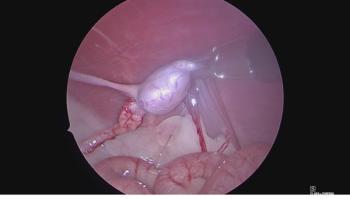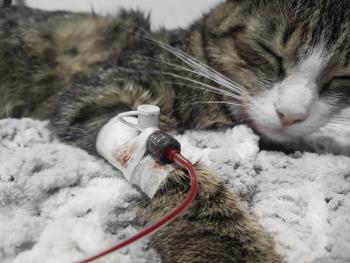
Promote and perform early spaying and neutering
Shelters can adopt out only so many animals, says Kate Hurley, DVM, MPVM, director of the Koret Shelter Medicine Program at the University of California, Davis. So the biggest impact on euthanasia numbers will be on the intake side of the equation, not the adoption side.
Shelters can adopt out only so many animals, says Kate Hurley, DVM, MPVM, director of the Koret Shelter Medicine Program at the University of California, Davis. So the biggest impact on euthanasia numbers will be on the intake side of the equation, not the adoption side. And one of the most effective strategies to reduce the number of animals brought to shelters, Dr. Hurley says, is early spaying and neutering.
What Works for Dr. Tracy Land
Janet M. Scarlett, DVM, who heads the Maddie's Shelter Medicine program at Cornell University, agrees that early spaying and neutering is one place veterinarians can make a large impact on the problem. She notes that veterinarians have traditionally been taught to do the surgeries at about 6 months of age, but a decade ago researchers began challenging the idea.
"When you look at the literature, you find nothing that is scientifically based about 6 months being the optimal age," Dr. Scarlett says. "Nobody really knows why we settled on 6 months. Maybe it had to do with the comfort levels of handling tissues of small animals and perhaps it had to do with anesthesia.
Advice from the Veterinary Medicine Practitioner Advisory Board
"We found out that with a few precautions like using a hot water bottle to keep the animal warm and paying attention to tissue handling—you can't just tug on a tiny uterus—you can spay an animal as young as 6 to 8 weeks. Most shelters are using the two-pound rule, and the data support that this is safe. There are very small risks with both puppies and kittens."
Advice from the Veterinary Medicine Practitioner Advisory Board
One randomized study published in 1997 reported that gonadectomy in both kittens and puppies in three periods —1 to 12 weeks, 12 to 23 weeks, and more than 24 weeks—resulted in no differences among the three groups in the incidence of major complications.1 The traditional age group did have more minor complications. The study was initiated in response to an American Veterinary Medical Association (AVMA) House of Delegates resolution in 1993, asking the organization to support the concept of early spaying and neutering. In fact, both the AVMA and the American Animal Hospital Association (AAHA) support spaying or neutering starting at 8 weeks of age (see "AVMA and AAHA statements on early spaying and neutering").
Dr. Scarlett says some evidence exists that dogs spayed or neutered at a very early age have a slightly higher risk of incontinence than do adults, but the risk is also seen in dogs neutered at traditional ages.
AVMA and AAHA statements on early spaying and neutering
Early neutering solves a compliance problem for practitioners, Dr. Scarlett says. Traditionally, a veterinarian completes the vaccination series when the pet is 4 months old. At that time, the veterinarian tells the pet owner to come back in two months for neutering. "By then," Dr. Scarlett says, "the kids are going back to school and they're really busy, and they put it off. It is a very common occurrence that people tell us, 'I didn't think she could come into heat that early,' or 'I meant to get him neutered but I forgot.'
"If veterinarians told their clients when they were lining them up that roughly two or three weeks after the final vaccination we'll schedule you to come right in and have that animal neutered," Dr. Scarlett says, "they would probably still bring the animal in, and we would get most of them before puberty."
The research shows that roughly 15% of puppies and kittens will have litters before they can be neutered, Dr. Scarlett says. "That's a hole I'm trying to plug."
However, if despite your best efforts, a puppy or kitten has a litter, spay the animal soon after birthing. "Ovariohysterectomy often is performed at the same time as a Cesarean section," says Margaret V. Root Kustritz, DVM, PhD, DACT. "The only downside is the incisions end up buried beneath the engorged mammary glands and the puppies may end up irritating them."
Dr. Scarlett says she has talked to many veterinarians who, once they learned how to perform pediatric neutering, were much more comfortable with neutering at a younger age than at the traditional age. "It is much easier, much faster, and the animals recover faster," she says. "Ask yourself how many litters 15% would prevent."
REFERENCE
1. Howe LM. Short-term results and complications of prepubertal gonadectomy in cats and dogs. J Am Vet Med Assoc 1997;211:57-62.
Newsletter
From exam room tips to practice management insights, get trusted veterinary news delivered straight to your inbox—subscribe to dvm360.




